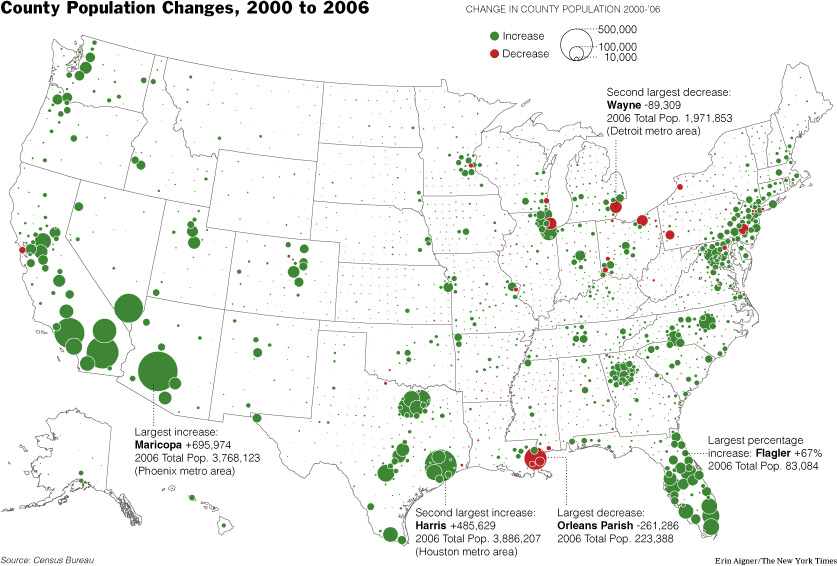About the map
This is a map of Chicago community areas, the number of DIY spaces in each area, and the socioeconomic state of the neighborhood based on an index developed by researchers at the University of Illinois at Chicago. The index used statistical changes in factors like median family income, percentage of families below the poverty level, median house value, percent owner-occupied housing, race/ethnicity, percent of school age children, percent of workers who are managers and professionals and percent of adults with a college education to describe how Chicago neighborhoods had changed over time.
The numbers in the markers represent the number of DIY spaces in the community area.
The shading of the community areas represents the socioeconomic status of the neighborhood:
| Dark Gray | Moderate decline |
| Light Gray | Mild decline |
| Green | Gentrification |
| Purple | Poverty |
| Mint Green | Positive Change |
DIY punk and gentrification
DIY punk spaces are often located in less resourced neighborhoods. These neighborhoods offer less expensive rent that is affordable even with income from sporadic part-time work or odd jobs, housing stock that might accommodate many roommates or unused warehouse space that can be converted to a music venue and living space. Neighborhoods housing DIY spaces may feature lower density housing which makes it easier to have band practice or shows without disturbing neighbors or empty lots that could be utilized for projects like community gardens. In some cases, people participating in the DIY punk subculture may fetishize less resourced neighborhoods, or neighborhoods with a large population of people from racial or ethnic minority groups as a reaction to white, suburban culture or a more affluent urban (“yuppie”) culture.
Daniel Traber’s article, “L.A.’s “White Minority”: Punk and the Contradictions of Self-Marginalization”, describes the fetishizing of poverty in the early days of American punk and hardcore culture in Los Angeles. Contemporary DIY culture complicates this dynamic. With community and social justice as core values of the subculture, middle-class DIY subcultural participants may create institutions in their neighborhood for their friends that are also available assets for the community at large. Punks may create a neighborhood community garden, a collective bicycle workshop or an arts space with free events for neighborhood children. However, these institutions, and even the presence of white, middle-class residents, may also make the neighborhood more appealing to other middle-class people and to developers creating housing speculating that more affluent residents will move to the neighborhood. Over time, both the punks and the neighborhood’s original residents may be priced out of the neighborhood. Furthermore, the conversion of industrial or warehouse space to housing, art studios, or gallery and performance spaces removes light industrial infrastructure that could create needed jobs in a neighborhood.
Where are DIY spaces located in Chicago?
I mapped all music venues that held events listed on the DIY Chicago calendar from the calendar’s inception in January 2010 to April 2010. These spaces were located in neighborhoods such as Logan Square, Humboldt Park and Bridgeport. I mapped the community areas, boundaries used to aggregate census data, containing DIY spaces as well as the number of spaces in each area.
Do Chicago DIY spaces follow trajectories of gentrification?
In 2003, researchers at the University of Illinois at Chicago created an index of neighborhood change based on census data from the decennial census from 1970-2000. The index looked at a number of factors such as total population, the percentage of population of different racial groups, median family income and percentage of the population with different educational levels. Based on how these factors changed in neighborhoods relative to the city as a whole, the researchers labeled the neighborhoods as experiencing dynamics such as poverty, mild decline, gentrification and positive change.
Neighborhoods with DIY spaces tended to be in neighborhoods that were gentrifying or in decline. While the research is based on data from the 2000 census, 2010 projections from EASI, provided by the Metro Chicago Information Center show that the median family incomes in all of the community areas are likely to increase from 2000-2010. This suggests that trajectories of gentrification detected in 2000 are likely to have continued or neighborhoods may be starting to gentrify.
What does this mean?
It is difficult to assess whether the effect of DIY punk spaces and residents on a neighborhood is positive or negative.
A recent National Public Radio story about a low rate of census return in a gentrified Brooklyn neighborhood sparked debate about whether or not the young, itinerant creative-class residents felt less connected to the neighborhood and were thus less likely to return their census forms. If this is the case, neighborhoods could be deprived of valuable federal funding for community resources.
On the other hand, the Chicago’s 49th Ward which includes the Rogers Park neighborhood, home to one long-time house that has shows in its basement, recently conducted a participatory budgeting process where all residents of the ward, aged 16 and older, could vote on how around $1 million in city menu money could be spent. Many of the proposed projects reflected grassroots, creative culture in the neighborhood. The process offers one model where DIY priorities might be institutionalized and still effect the culture of the neighborhood, even as demographics change.
Ultimately, it may be whether or not DIY spaces and the people who inhabit them stay in the neighborhood that decides their impact as the neighborhood changes.


